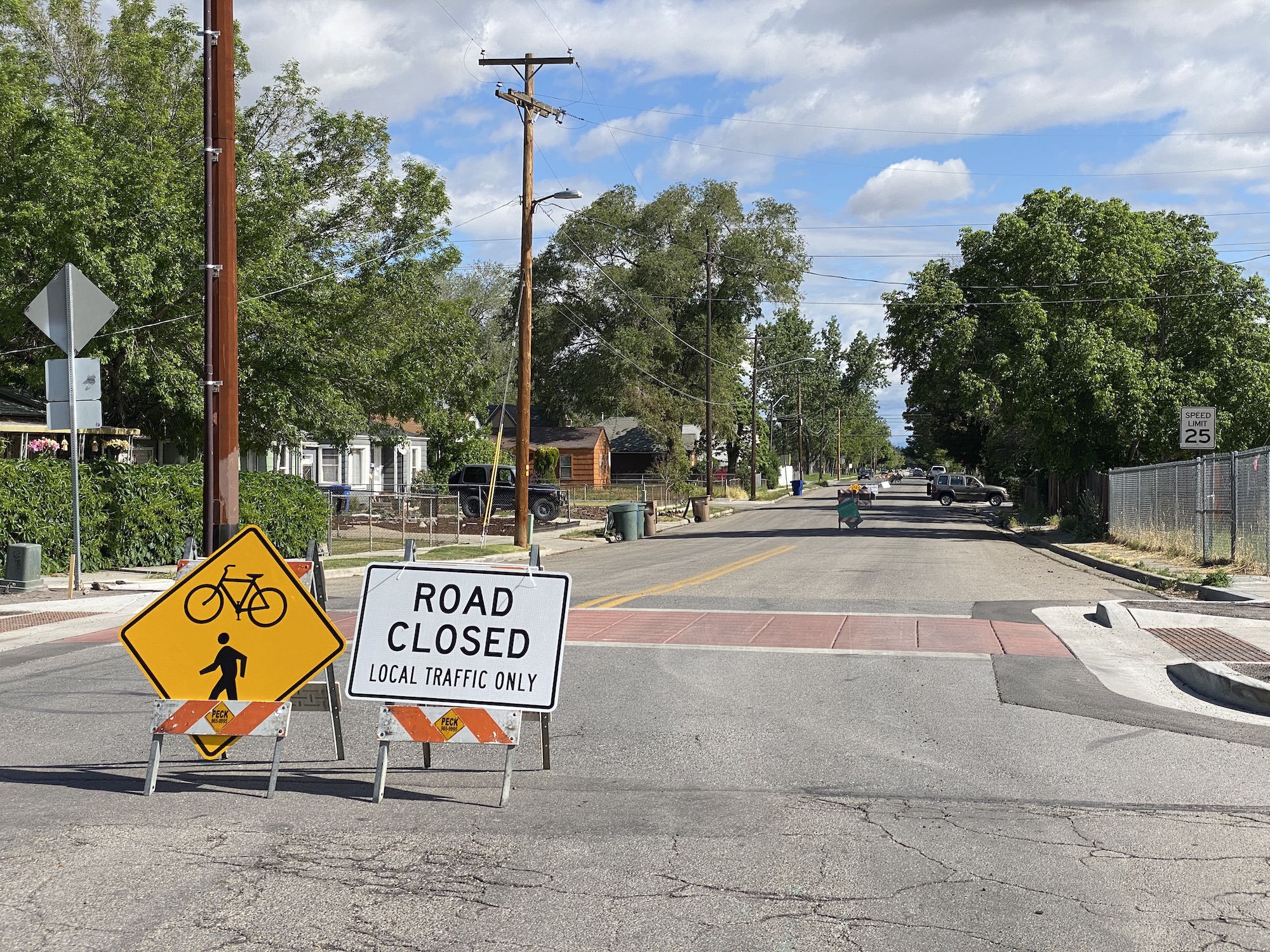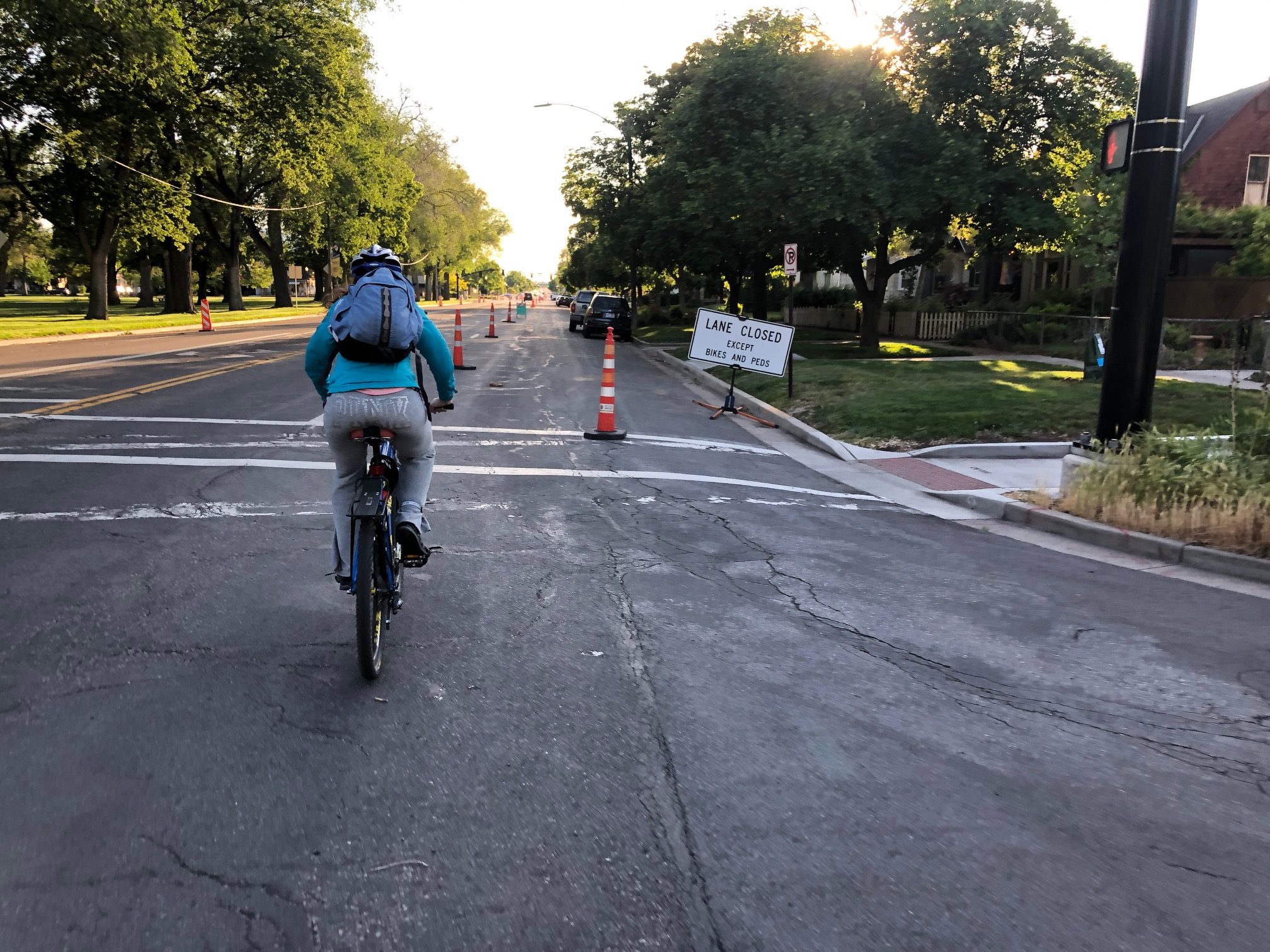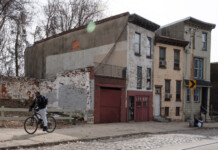On April 23, 2020 Salt Lake City Mayor Erin Mendenhall announced the first of several “Stay Safe, Stay Active” street closures with the announcement of the closure of 500 North between Redwood Road and 800 West. With the announcement, Salt Lake City joined a growing number of cities throughout the country that have begun reimagining their relationship with streets.
Across the country cities of all sizes have closed streets to vehicle traffic and opened safe access to pedestrians and cyclists. The simple act of putting up signs and barricades can provide significant recreation space for families on bicycles, joggers looking for extra space, and people who have mobility issues – whose needs are all too often forgotten.

With up to 80% of habitable land in a city paved over for streets, every inch of recreation space become crucial at a time when physical distancing is so important. To promote the public health, cities have reimagined the community’s relationship with its streets. Residents, it seems, are all too happy to take advantage of the safe, pedestrian-centered changes by utilizing the open spaces.
With bicycle sales experiencing a significant boom since the onset of COVID-19, streets are becoming a new adventure for cyclists without a history on city streets. The urgency of reclaiming streets has grown as maintaining physical distancing during the COVID-19 crisis has proven difficult to some residents. This is especially true in dense areas where playgrounds and other public gathering places have closed due to health precautions. As summer approached, and trails, bike paths, and sidewalks grew busier, Salt Lake City took action to provide additional outdoor spaces for residents to get out onto the street and enjoy physical activity.
To determine the least disruptive and community-friendly closures, Salt Lake City conducted a weeklong survey. During the week that the survey was active, over 6,200 people completed the survey weighing in on the proposed closures.
In addition to survey data, the city used geographic equity, connections to parks and trails, hospital/emergency routes, transit routes, and traffic patterns in determining the best routes for closure.
At the time of the street closure announcement, Salt Lake City Transportation Director Jon Larsen released a statement explaining the care that the city was taking in opening streets, “These are challenging times and we are aware of the strain that the current situation is placing on people’s physical and mental health. Opening up more space to walk and bike is one way we are trying to help people stay healthy and safe… Similar initiatives to this have been successfully implemented in cities throughout the world, and we’re excited to make this happen in Salt Lake City.”
Since the initial closure in April, Salt Lake City announced several other neighorhood street closures, which altogether, represented roughly 8 miles of closures within city limits. However, as of June 30th, Salt Lake City began reopening some of the streets that were closed previously and normal operation has resumed.
As with all changes, the closure of streets hasn’t been without controversy and some residents have expressed frustration that vehicles are unnecessarily restricted by the closures. Still, many residents have expressed optimism about the future of initiatives like “Stay Safe, Stay Active.”
Taylor Anderson from the newly launched Sweet Streets Initiative, a new Salt Lake City transportation advocacy group, shares that optimism. “I think particularly during this pandemic we’ve seen just how inadequate our sidewalks — and even some trails — are in just about every neighborhood. The Stay Safe, Stay Active streets showed what can be accomplished when we view streets as public spaces for everyone and not just people traveling by car. About 80% of the public space in our city consists of roads, so it’s time for Salt Lake City to join others in permanently reallocating street space for all people.”
The lessons learned, he argues, will provide a pathway forward for doing just that. “We saw that we can make changes to our streets and the sky won’t fall. There won’t be paralyzing gridlock. When given the space, people will get into the streets we all pay for and use it. I hope and expect that the city collected valuable data during this unprecedented time to see how these streets were used when they were temporarily altered to help make changes moving forward.”
Others see significant opportunity to use street closures as a mechanism for stimulating an awakening economy. As states and cities begin to reopen, many restaurants and businesses see closed streets as an opportunity to better utilize urban space to thread the needle of public health and economics.
On June 13th, Salt Lake City Mayor Erin Mendenhall signed an executive order allowing restaurants and businesses to apply for special permitting to reopen in outdoor spaces so long as they provide a 6-foot pathway for pedestrians and foot traffic.
It remains to be seen what kind of cultural change will occur when whatever form of normalcy returns post-COVID. However, one thing seems to be apparent – residents will have dramatically reimagined their relationship with the streets in cities across the country.

[Editor’s Note: the following streets were closed in Salt Lake City as part of this program, although a number have since reopened: 900 South between 300 East and 700 East, 600 East between South Temple and 900 South, Wasatch Drive between Crestview Drive and 1300 South, Stratford Avenue between 1300 East and 2000 East, 4th Avenue between A Street and N Street, 200 West between 600 North and North Temple, Emery Street between 300 South and Hayes Avenue, 800 East between 700 South and 1700 South, Kensington Avenue between 700 East and 1400 East, and between 1500 East and 1600 East.]







